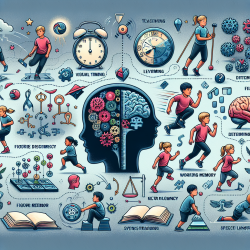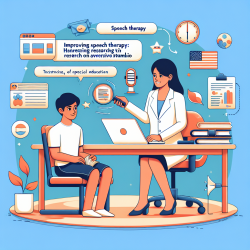In the pursuit of enhancing children's cognitive abilities, particularly those struggling with reading difficulties, recent research highlights the significant benefits of visually-based neurotraining. The study titled "Training on Movement Figure-Ground Discrimination Remediates Low-Level Visual Timing Deficits in the Dorsal Stream, Improving High-Level Cognitive Functioning, Including Attention, Reading Fluency, and Working Memory" by Lawton and Shelley-Tremblay offers promising insights.
This study focuses on improving the dorsal stream's function, which is crucial for visual processing, by training students to discriminate movement against a stationary background. The findings suggest that this type of training significantly enhances various cognitive skills, including:
- Attention
- Reading Fluency
- Working Memory
Key Findings
The research involved training second and third graders, both dyslexic and typically developing, using a method known as PATH to Reading. This visually-based training involved movement direction-discrimination tasks. The results were compared to a control group that received traditional guided reading interventions.
Improvements in Visual Timing and Cognitive Skills
The study found that students who underwent movement-discrimination training showed substantial improvements in:
- Visual timing and sensitivity
- Selective and sustained attention
- Reading speed and comprehension
- Phonological processing
- Visual and auditory working memory
These improvements were significantly greater than those observed in the control group, suggesting that visual training targeting the dorsal stream can remediate low-level visual timing deficits and, consequently, enhance high-level cognitive functions.
Practical Implications for Practitioners
For speech-language pathologists and educators, incorporating movement figure-ground discrimination training can be a game-changer. Here’s how you can implement these findings in your practice:
- Integrate Visual Training Programs: Use movement-discrimination tasks that train children to detect motion against stationary backgrounds. Programs like PATH to Reading can be particularly effective.
- Early Intervention: Start visual training early, especially for children showing signs of dyslexia or reading difficulties.
- Monitor Progress: Regularly assess improvements in attention, reading fluency, and working memory to adjust training protocols as needed.
Encouraging Further Research
While the findings are promising, further research is essential to explore the long-term benefits and potential applications of visual neurotraining across different age groups and cognitive abilities. Practitioners are encouraged to stay updated with ongoing research and consider contributing to studies that can expand our understanding of visual timing and cognitive development.
To read the original research paper, please follow this link: Training on Movement Figure-Ground Discrimination Remediates Low-Level Visual Timing Deficits in the Dorsal Stream, Improving High-Level Cognitive Functioning, Including Attention, Reading Fluency, and Working Memory.










